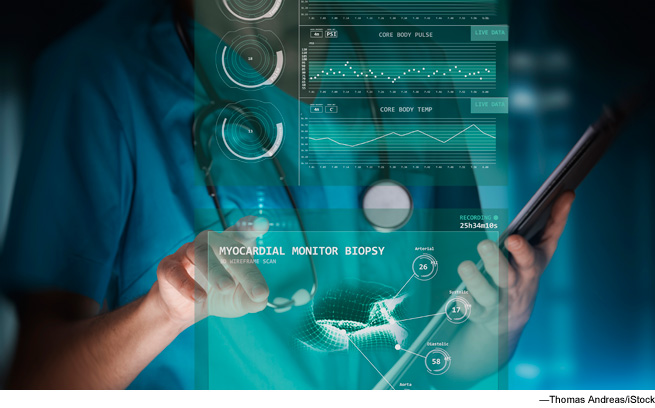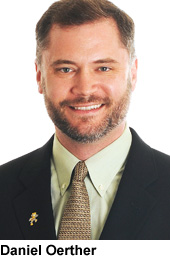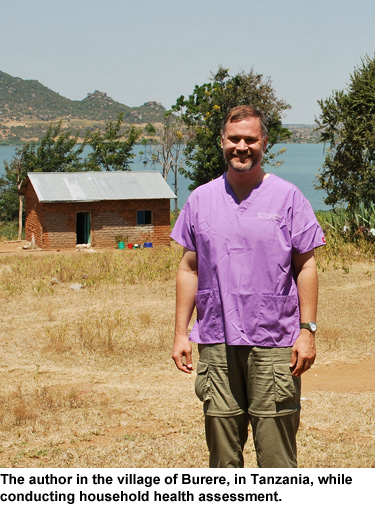Author regards Florence Nightingale as first environmental engineer.
 An environmental health engineer says nursing should be included as a STEM discipline because it uses the scientific method to inform compassionate, evidence-based care.
An environmental health engineer says nursing should be included as a STEM discipline because it uses the scientific method to inform compassionate, evidence-based care. I’m an engineer, not a nurse. Thus, as I stated on my application for lifetime honorary membership in Sigma Theta Tau International Honor Society of Nursing (Sigma)—granted in 2011—“I’m not eligible for regular membership.” But I’ve learned a lot from nurses and from nursing, and I believe it’s important to recognize nursing as a STEM discipline.
I’m an engineer, not a nurse. Thus, as I stated on my application for lifetime honorary membership in Sigma Theta Tau International Honor Society of Nursing (Sigma)—granted in 2011—“I’m not eligible for regular membership.” But I’ve learned a lot from nurses and from nursing, and I believe it’s important to recognize nursing as a STEM discipline.
In the United States, recent investments in STEM—which stands for science, technology, engineering, and mathematics—can be traced to two events in 2007: 1) publication of a report by the U.S. National Academies of Science, Engineering, and Medicine titled Rising Above the Gathering Storm: Energizing and Employing America for a Brighter Economic Future and 2) passage of the America COMPETES Act, also known as “America Creating Opportunities to Meaningfully Promote Excellence in Technology, Education, and Science Act.” The argument goes: In an increasingly technological world, the ability of a nation to perform well in STEM disciplines will drive economic development and contribute to national security while ensuring global leadership. Thus, the United States is investing in STEM education to build a robust pipeline of researchers, practitioners, and teachers of these disciplines.
Where’s nursing?
Beyond serving as a convenient acronym for science, technology, engineering, and math, what is STEM, and why isn’t nursing already included? There’s no single, agreed-upon definition, but most working definitions include something similar to the following: “an assemblage of practices and processes that transcend disciplinary lines and from which knowledge and learning of a particular kind emerge.” The scientific method—to observe a phenomenon, generate a hypothesis regarding it, and then test that hypothesis by designing, conducting, analyzing, and interpreting an experiment—is a defining skill set associated with the acronym STEM. Engineering—applying science to solve complex problems through creative design within defined constraints—is another STEM skill set. Technology—biotech, nanotech, and info tech—provides tools to achieve solutions, and mathematics—the lingua franca of scientists and engineers—provides the “glue” to hold everything together. Sincere apologies to my mathematician friends for this horrible over-simplification!
It turns out that nursing is included within STEM by the U.S. Department of Labor’s Bureau of Labor Statistics. (Perhaps to contribute to the calculation of a “gap” in STEM-trained citizens to justify federal funding?) In contrast, nursing is not included within STEM by U.S. Immigration and Customs Enforcement. (Driven, perhaps, by a desire to slow global healthcare inequities by reducing immigration?) Should nursing be considered a STEM field? As the title of this Forbes article asserts, experts disagree.
Sexism?
Perhaps part of the reason for excluding nursing from STEM can be traced to the ongoing debate about diploma versus baccalaureate nurse education and qualifications for nursing practice. And perhaps another part of the reason can be traced to the U.S. National Science Foundation’s aversion to funding “medical sciences” research. Or, perhaps sexism plays a role. (The majority of engineers are male.) Whatever the reason, the exclusion of nursing from STEM in the United States has contributed to a serious deficiency.
STEM-trained practitioners use reductionist approaches: Complex problems are broken down into manageable parts, and repeated testing strengthens fundamental understanding. While reductionism is tremendously useful for driving efficiency in evidence-based practice, a serious shortcoming of the method is its inability to integrate the “user experience” to generate holistic, creative solutions. Enter STEAM—the addition of A, as in art, to STEM for the purpose of stimulating innovation and risk-taking as practiced in artistic design.
STEAM shows promise for translating the fundamental findings of science into marketable technologies to drive economic development, contribute to national security, and ensure global leadership. For example, the U.S. National Science Foundation (NSF) developed the I-Corps program. Using training in entrepreneurship, this program “prepares scientists and engineers to extend their focus beyond the university laboratory, and accelerates the economic and societal benefits of NSF-funded, basic-research projects that are ready to move toward commercialization.”
In my view, as a professor of engineering and honorary nurse, the “big picture” appears to be that failure to include nursing as a STEM discipline has created an Achilles’ heel that prevents investments in our educational system from meeting the original policy objective—namely, the stimulation of economic development.
But don’t just take my word for it.
STEMpathy
Thomas Friedman, famed New York Times columnist and three-time Pulitzer Prize-winning author, has coined the term “STEMpathy” to identify “jobs that combine STEM skills with human empathy.” To paraphrase Friedman’s argument, while integrated circuits of computers and robots can replace the heads and hands of human beings, jobs of the future must rely upon the uniqueness of the human “heart.”
If there is a profession more “heart centered” than nursing, I’m still waiting to find it. And when I reflect on STEM—using the scientific method, technology, and math to solve problems—I see no reason to exclude nursing, because nurses and nursing do exactly that: employ the scientific method, technology, and math to inform evidence-based practice and solve complex problems in a holistic manner. To this would-be nurse, integrating nursing into STEM to create STEMpathy seems a logical choice.
 As an environmental engineer who seeks to ensure food and nutrition security by promoting water, sanitation, and hygiene (WaSH), I constantly look to Florence Nightingale’s Environmental Theory to guide my own evidence-based practice of engineering. To me, Nightingale was the first environmental engineer. She recognized the value of pure, fresh air; pure, fresh water; effective drainage (sewerage); cleanliness (of body, food, and environment); and light (especially direct sunlight). When lecturing, I have no difficulty convincing my engineering students that the founder of modern nursing was an engineer. But can I convince nurses of the value of promoting nursing as a STEM discipline?
As an environmental engineer who seeks to ensure food and nutrition security by promoting water, sanitation, and hygiene (WaSH), I constantly look to Florence Nightingale’s Environmental Theory to guide my own evidence-based practice of engineering. To me, Nightingale was the first environmental engineer. She recognized the value of pure, fresh air; pure, fresh water; effective drainage (sewerage); cleanliness (of body, food, and environment); and light (especially direct sunlight). When lecturing, I have no difficulty convincing my engineering students that the founder of modern nursing was an engineer. But can I convince nurses of the value of promoting nursing as a STEM discipline?
Three learning domains
Benjamin Bloom and his co-workers famously identified the three learning domains: cognitive, psychomotor, and affective. We know that machines outperform humans in the psychomotor domain. Ask anyone formerly employed in manufacturing if the assembly line was a hugely disruptive force. And it’s easy to imagine how machines outperform humans in the cognitive domain. They never forget, don’t suffer from attention deficit, and don’t sleep. If humans are to compete in a future “machine world,” they will need to leverage the domain in which they appear to have an advantage—affective learning.
Nursing dominates this space. Caring, which is both an art and a science, is arguably the most valuable currency in the affective domain. To promote health, senior nurses train the next generation of nurses to apply the tactical knowledge of caring to constantly assess patients and adjust the patient’s environment to maximize wellness and prevent illness. This is fundamentally Nightingale’s Environmental Theory.
But did you know that machines can outperform humans in the affective domain? A recent article published in Journal of Personality and Social Psychology created quite a stir on the internet with its declarative title: “Deep Neural Networks Are More Accurate Than Humans at Detecting Sexual Orientation From Facial Images.” And that’s just the proverbial tip of the iceberg. Imagine if a smartphone carried by a nurse does a better job of detecting drug-seeking behavior from facial recognition than an experienced nurse’s practice of caring. What if the technology developed for smart-car autonomous driving was reprogrammed to passively monitor a patient’s behavior in a hospital bed and prompt a robotic assistant to offer a sip of water, adjust the pillows, or drop in for a conversation to soothe a case of nerves?
Others
Nurses practice “others-centered” problem solving. Nursing is all about the “user experience.” If an increasingly technological world requires training in STEM to ensure economic development, national security, and global leadership, then it’s imperative that we improve STEM. I argue that including nursing as a STEM discipline is a much better solution than adding art or entrepreneurship. And I’m not alone.
In the United Kingdom, STEM is STEMM, with the extra “M” referring to medicine. As an honorary nurse, I’m very sensitive to the important differences among various healthcare professions, but as an engineer, I appreciate the practicality of a good acronym. The UK, in partnership with other members of the Commonwealth of Nations, is promoting STEMM education as a “route to empowerment and leadership for women.” The United Nations Educational, Scientific, and Cultural Organization (UNESCO) has launched a similar initiative, the STEM and Gender Advancement (SAGA) project, “to contribute to improving the situation of women and reducing the gender gap in science, technology, engineering and mathematics (STEM).”
A good match
From my perch as a professor of engineering and honorary nurse, I see tremendous potential in the “marriage” of the male-dominated STEM disciplines with the female-dominated nursing profession. Far from the differences that many highlight, I see tremendous similarities between the practice of engineering and the practice of nursing. For example, there are almost no significant differences in style and focus among the research articles I write for environmental health engineering and the research articles I read in community health nursing. We use many of the same techniques, tackle many of the same problems, and envision a world free from health inequality.
What I do view as a major difference between engineering and nursing is the orientation of practitioners and patients. For instance, the first canon in the Code of Ethics for Engineers of the U.S. National Society for Professional Engineers states, “Engineers, in the fulfillment of their professional duties, shall hold paramount the safety, health, and welfare of the public.” The first provision in the Code of Ethics for Nurses with Interpretative Statements of the American Nurses Association states, “The nurse practices with compassion and respect for the inherent dignity, worth, and unique attributes of every person.”
The nursing code screams STEMpathy, and we—the STEM community—desperately need nurses and nursing to join with us to train future researchers, practitioners, and teachers in these disciplines. Sharing my personal opinion as an honorary nurse, I believe our collective goal should be to promote global (rather than national) economic development and preserve international peace through cooperation and mentoring rather than through competition and bullying.
I look forward to a world that recognizes Florence Nightingale as a pioneer in STEM, and I look forward to working with my friends and colleagues in nursing to make this a reality. RNL
Daniel B. Oerther, PhD, PE, BCEE, FAAN, professor of environmental health engineering at Missouri University of Science and Technology, is a foreign affairs officer and Fulbright specialist with the U.S. Department of State, Jefferson Science Fellow with The National Academies, lifetime honorary member of Sigma, and lifetime honorary member of the American Academy of Nursing.